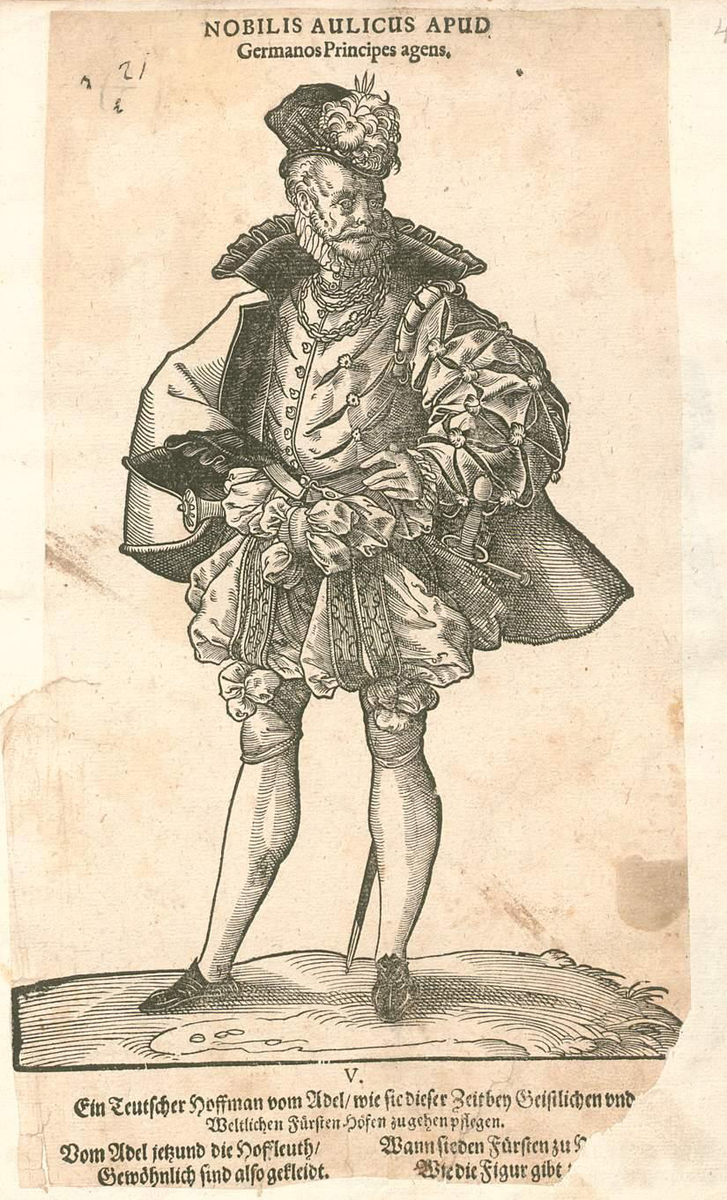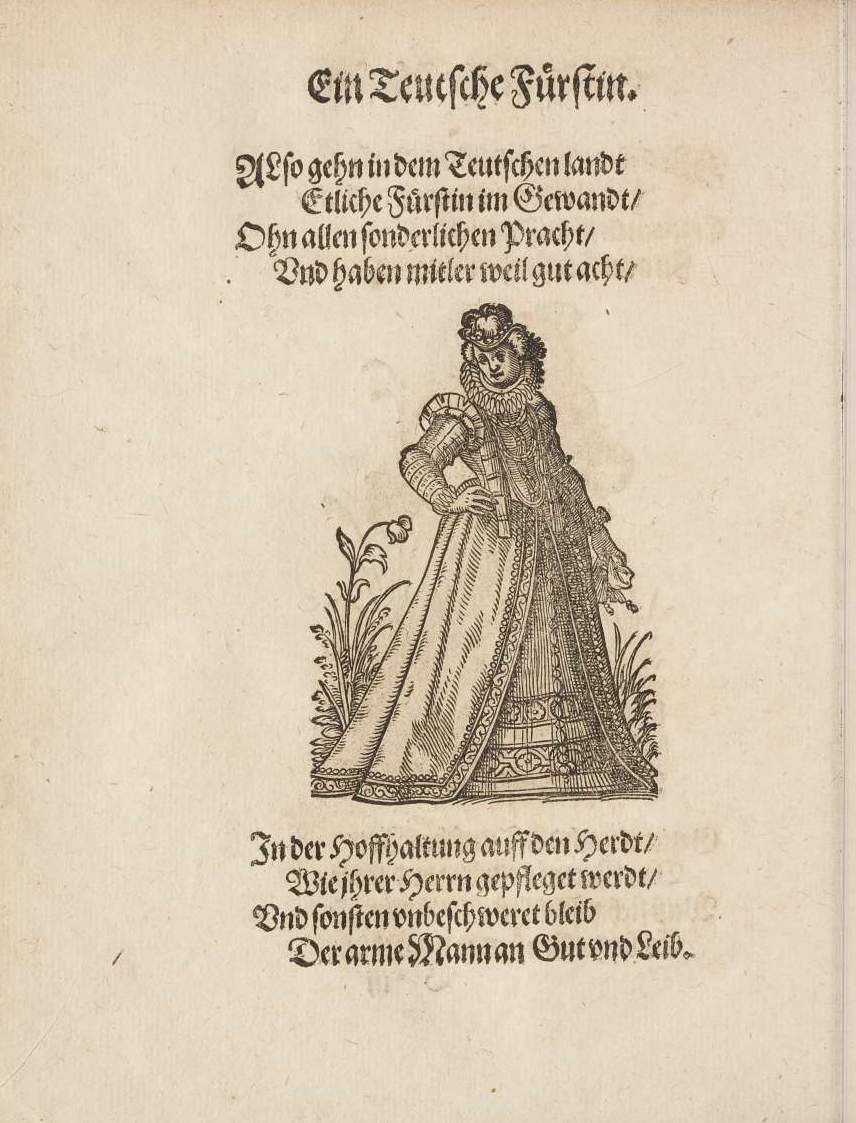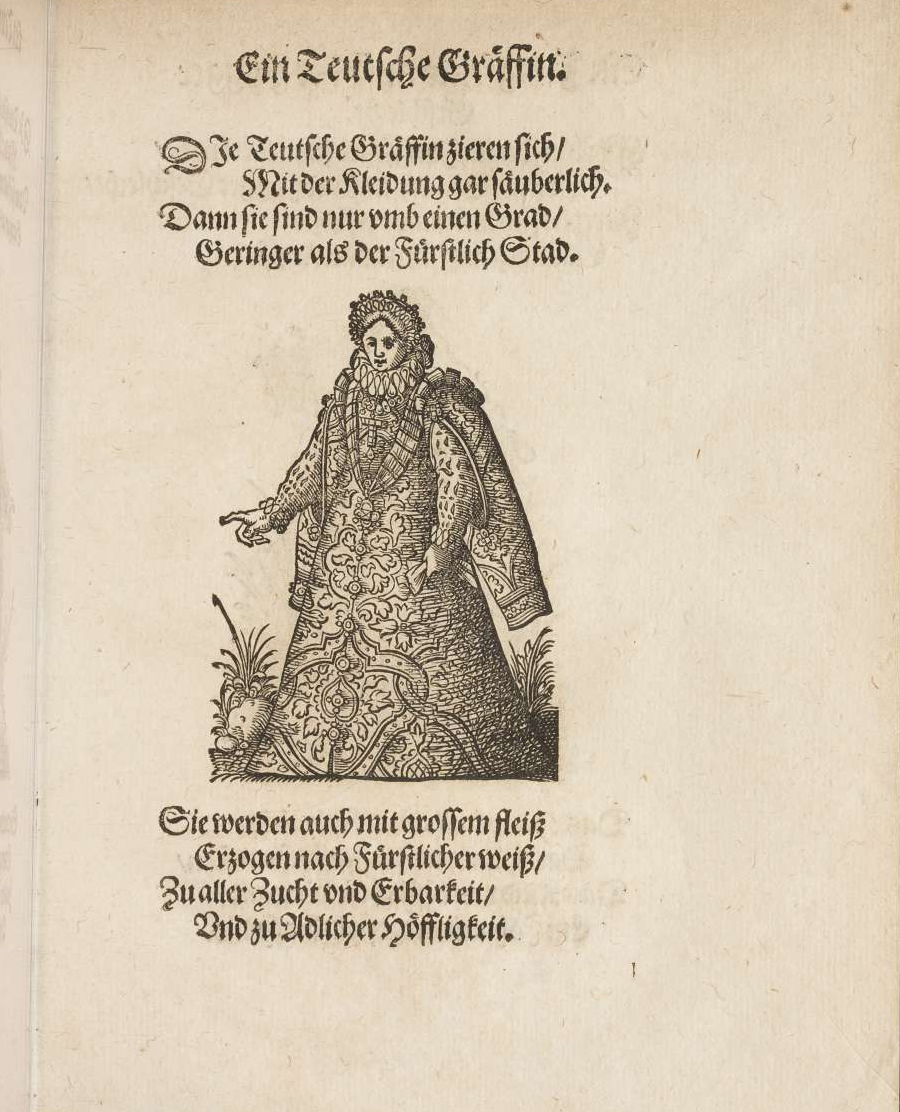Clothing of a German Courtier (1577) and a German Princess and Countess (1586)
Abstract
Costume books or books featuring traditional garments [Trachten] were a popular print genre in Early Modern Europe and thus remain important historical sources. These books were printed, disseminated, and widely read from the 16th century onwards; their success being partially attributable to advances in printing and to the expansion of travel opportunities. Traditional attire from cultures throughout the world were represented in these books, as were national costumes and dress styles from various European countries. German fashions and traditional costumes for men and women from different social classes could be found in Trachten books as well.
The first image featured below comes from Hans Weigel and Jost Amman’s famous Trachten book of 1577, Habitus praecipuorum populorum tam virorum quam feminarum singulari arte depicti. It depicts the clothing of a male German courtier. Gender-specific clothing gradually became established in the late Middle Ages and the Early Modern period. Over the long term, as men’s outer garments (jackets and doublets) grew shorter, men’s leggings evolved into pants, whereupon men’s and women’s garments thus began to diverge. Whereas men started wearing pants and short outer garments, women still dressed in long outer garments.
The second and third images show a German princess and a German countess and come from a Trachten book by Thrasibulus Torrentinus Mutislariensis (Conrad Lautenbach) that focused on women’s clothing: Im Frauwenzimmer wirt vermeldt von allerley schönen Kleidungen vnnd Trachten der Weiber/ hohes vnd niders Stands/ wie man fast an allen Orten geschmückt vnnd gezieret ist (1586).
Source
Source: Clothing of a German courtier, from Hans Weigel und Jost Amman, Habitus praecipuorum populorum tam virorum quam feminarum singulari arte depicti. Nuremberg, 1577. Bavarian State Library. Available online at: http://daten.digitale-sammlungen.de/bsb00072483/image_15
Clothing of a German princess and countess, from Thrasibulus Torrentinus Mutislariensis (Conrad Lautenbach), Im Frauwenzimmer wirt vermeldt von allerley schönen Kleidungen vnnd Trachten der Weiber/ hohes vnd niders Stands/ wie man fast an allen Orten geschmückt vnnd gezieret ist: Als Teutsche/ Welsche/ Frantzösische/ Engelländische/ Niderländische/ Böhemis.../ [Online-Edition]. Franckfurt am Mayn: Feyrabend, 1586, 14–15. Herzog August Bibliothek Wolfenbüttel. Available online at: http://diglib.hab.de/drucke/180-19-quod-3s/start.htm
Bavarian State Library/ Herzog August Bibliothek Wolfenbüttel
Further Reading
Frederick G. Crofts, “Visualizing Germanness through Costumes in the Sixteenth Century,” The Historical Journal, volume 64, issue 5 (December 2021), pp. 1198–1229. DOI: https://doi.org/10.1017/S0018246X20000667
Gabriele Mentges, “Mode, Städte und Nationen: Die Trachtenbücher der Renaissance,” in Jutta Zander-Seidel, ed., In Mode. Kleider und Bilder aus Renaissance und Frühbarock. Ausstellung im Germanischen Nationalmuseum. Nürnberg, 2015, pp. 144–51.
Ulinka Rublack, Dressing Up. Cultural Identity in Renaissance Europe. New York: Oxford University Press, 2010.
Claudia Ulbrich and Richard Wittmann, eds., Fashioning the Self in Transcultural Settings: The Uses and Significance of Dress in Self-Narratives. (Istanbuler Studien und Texte 17) Würzburg, 2015.


